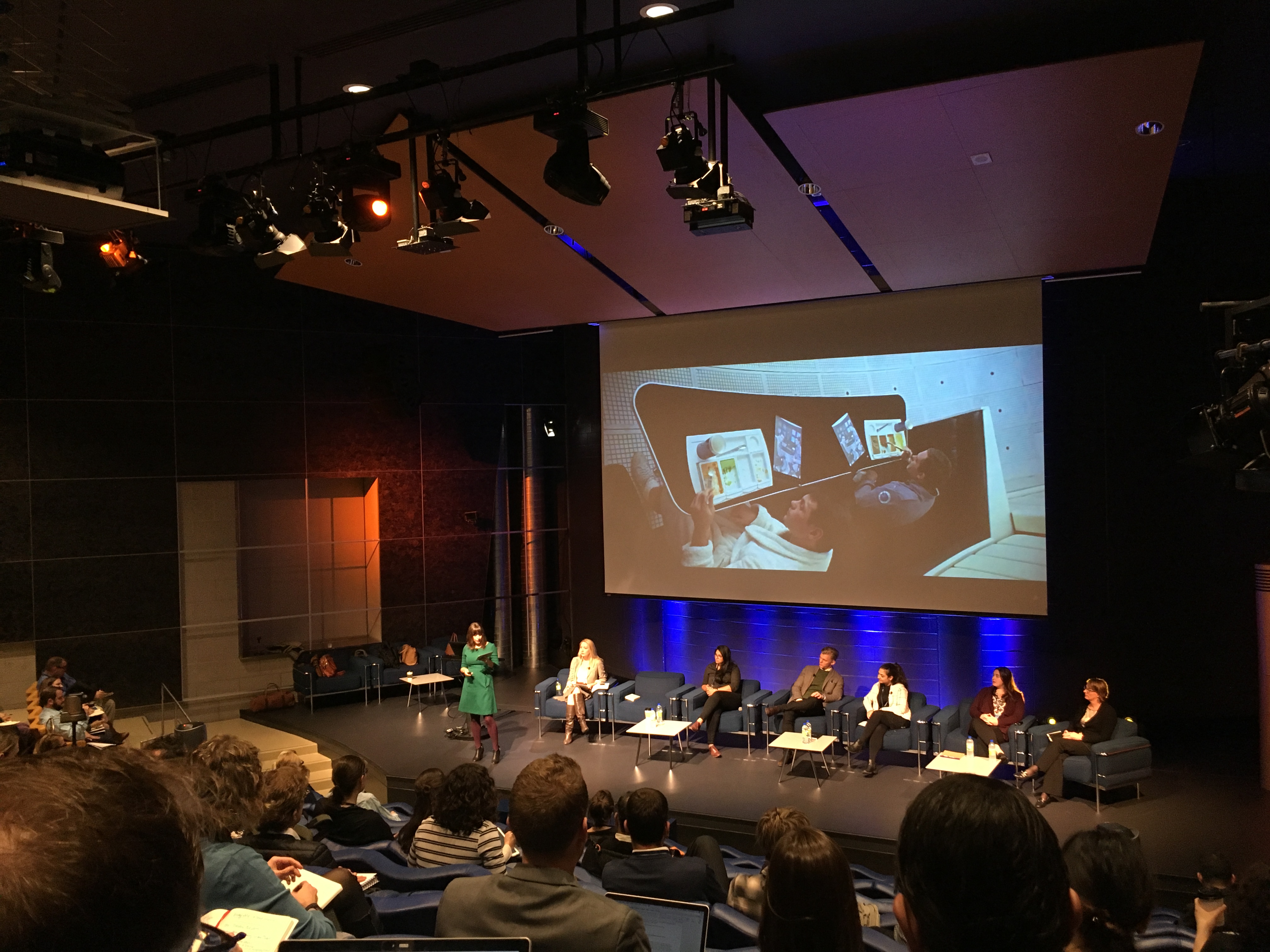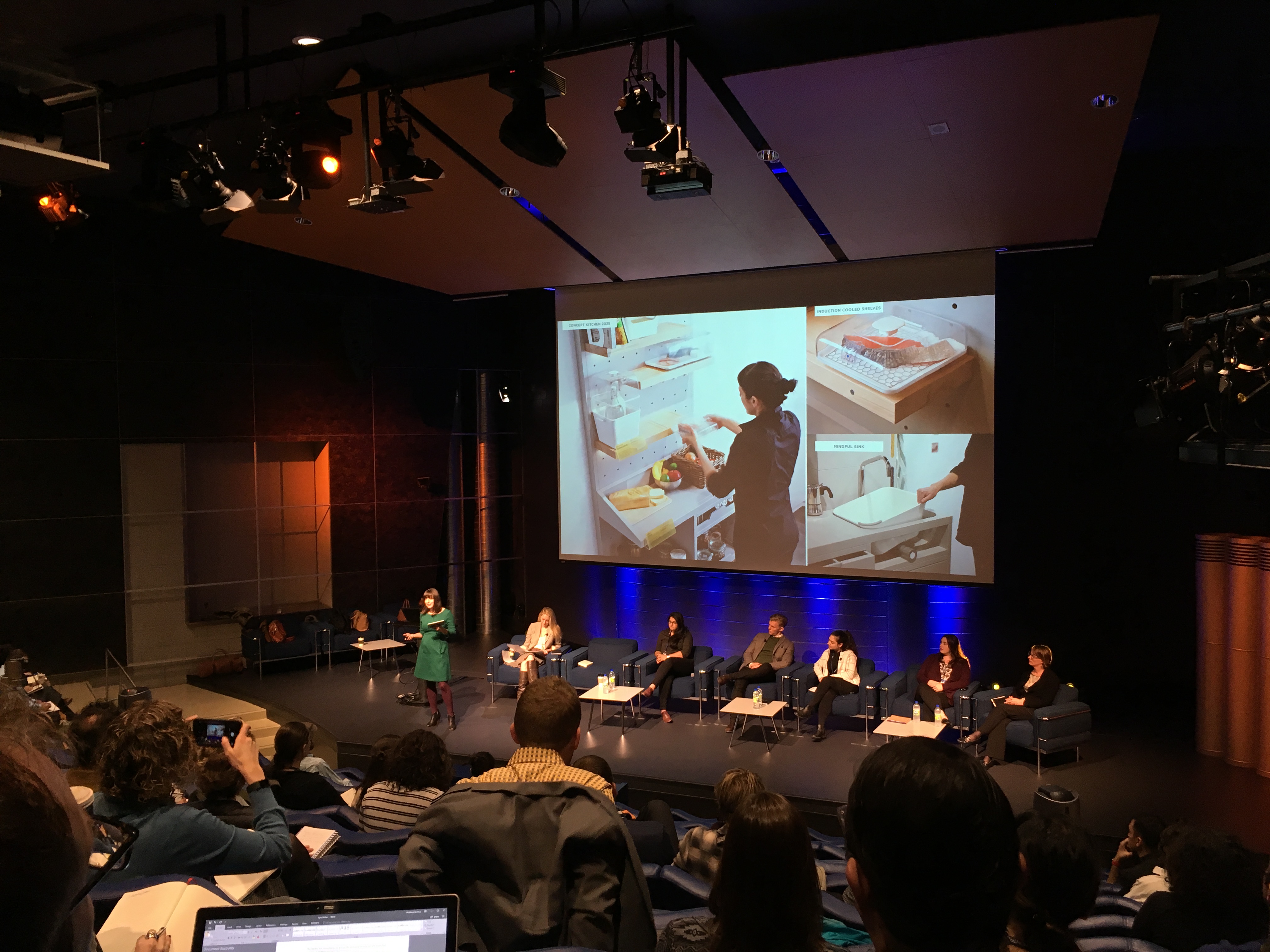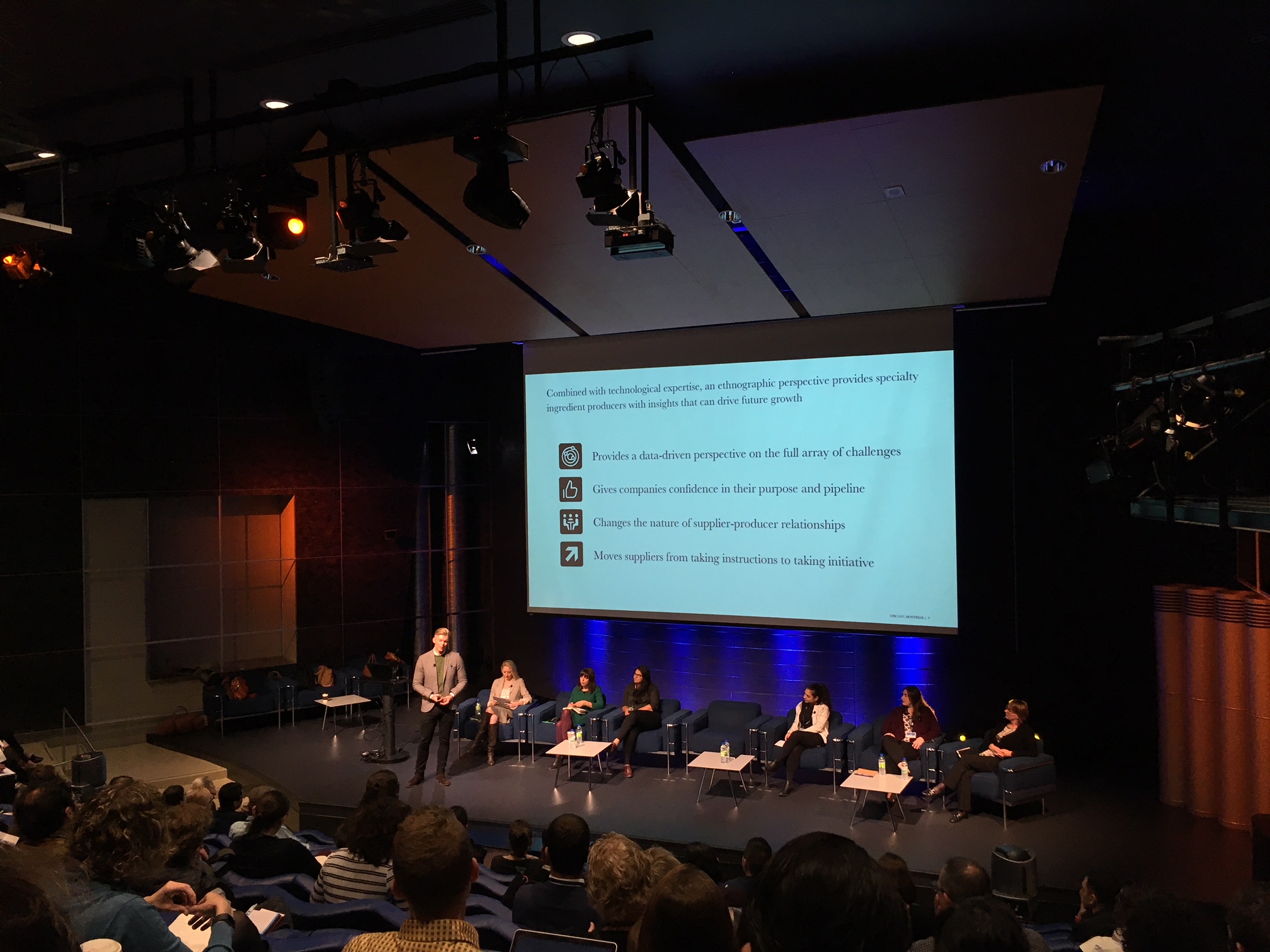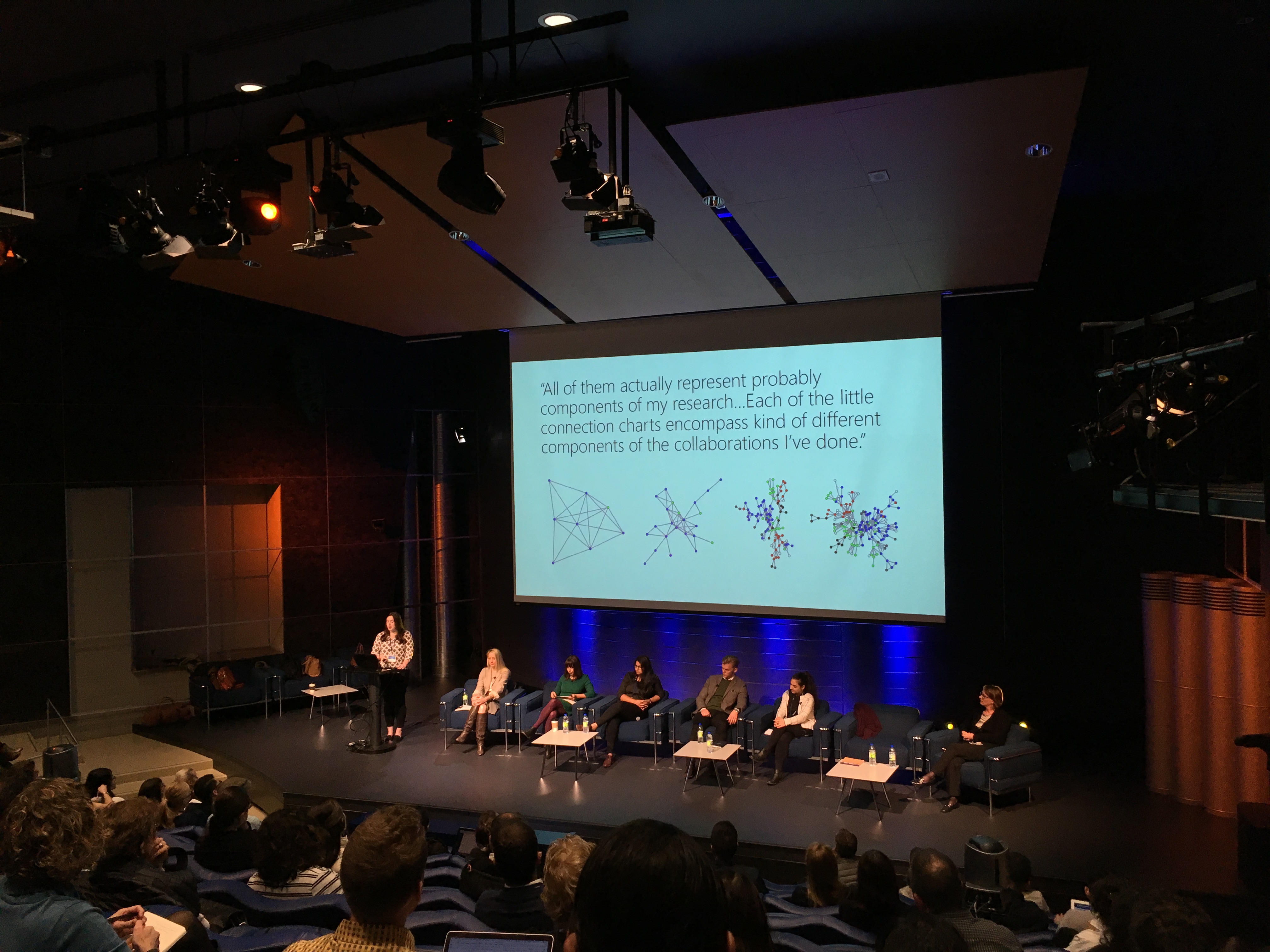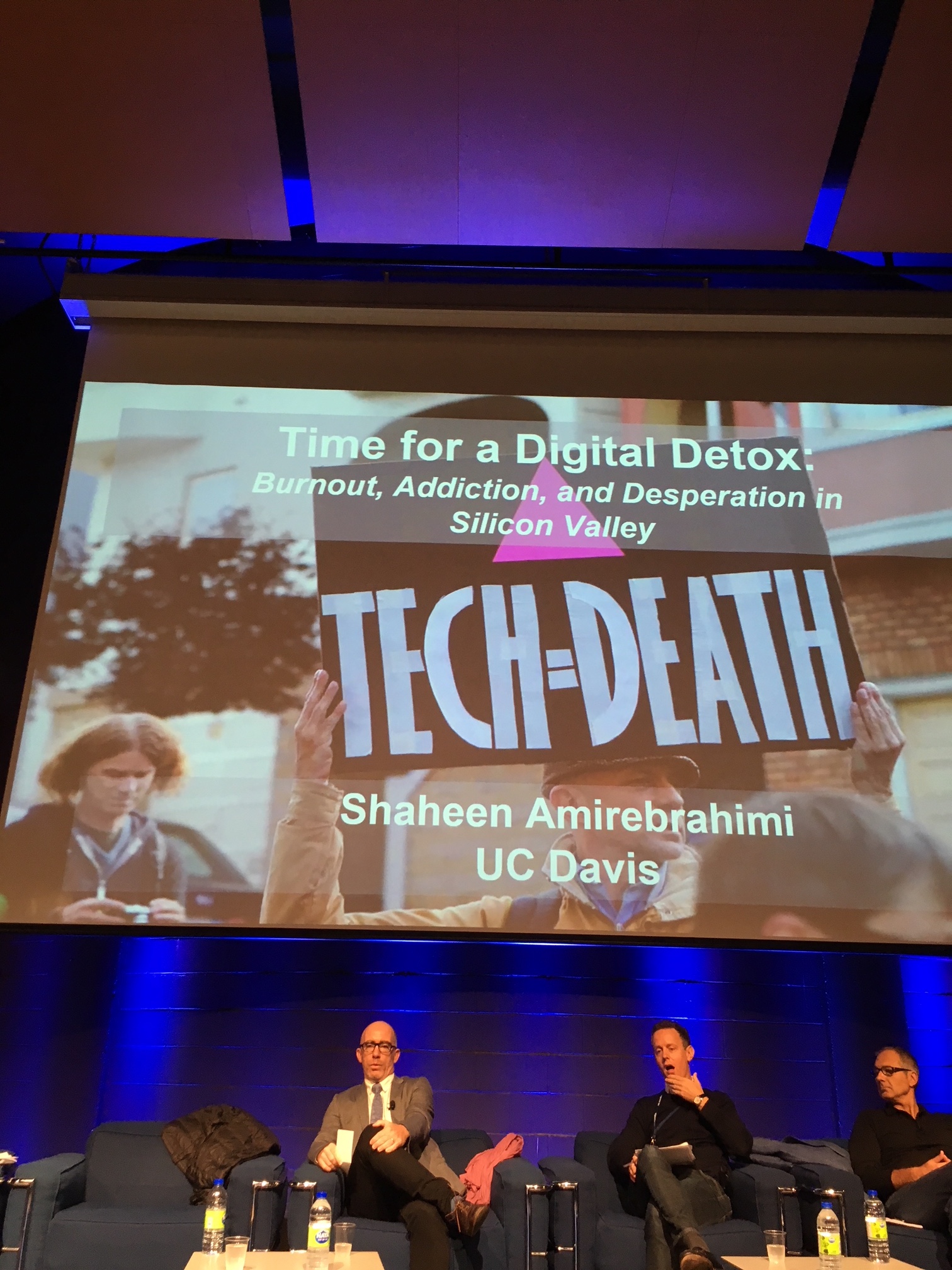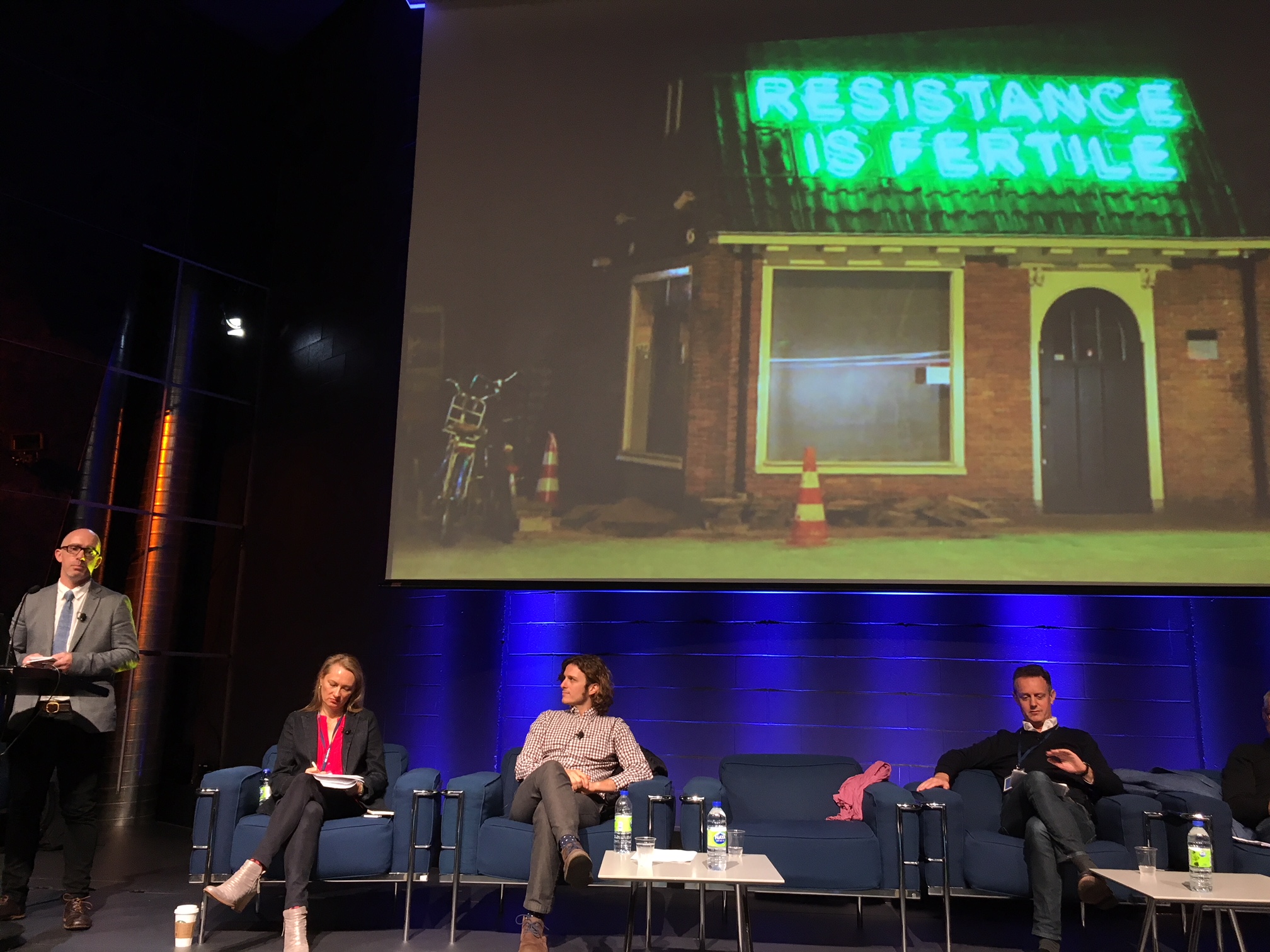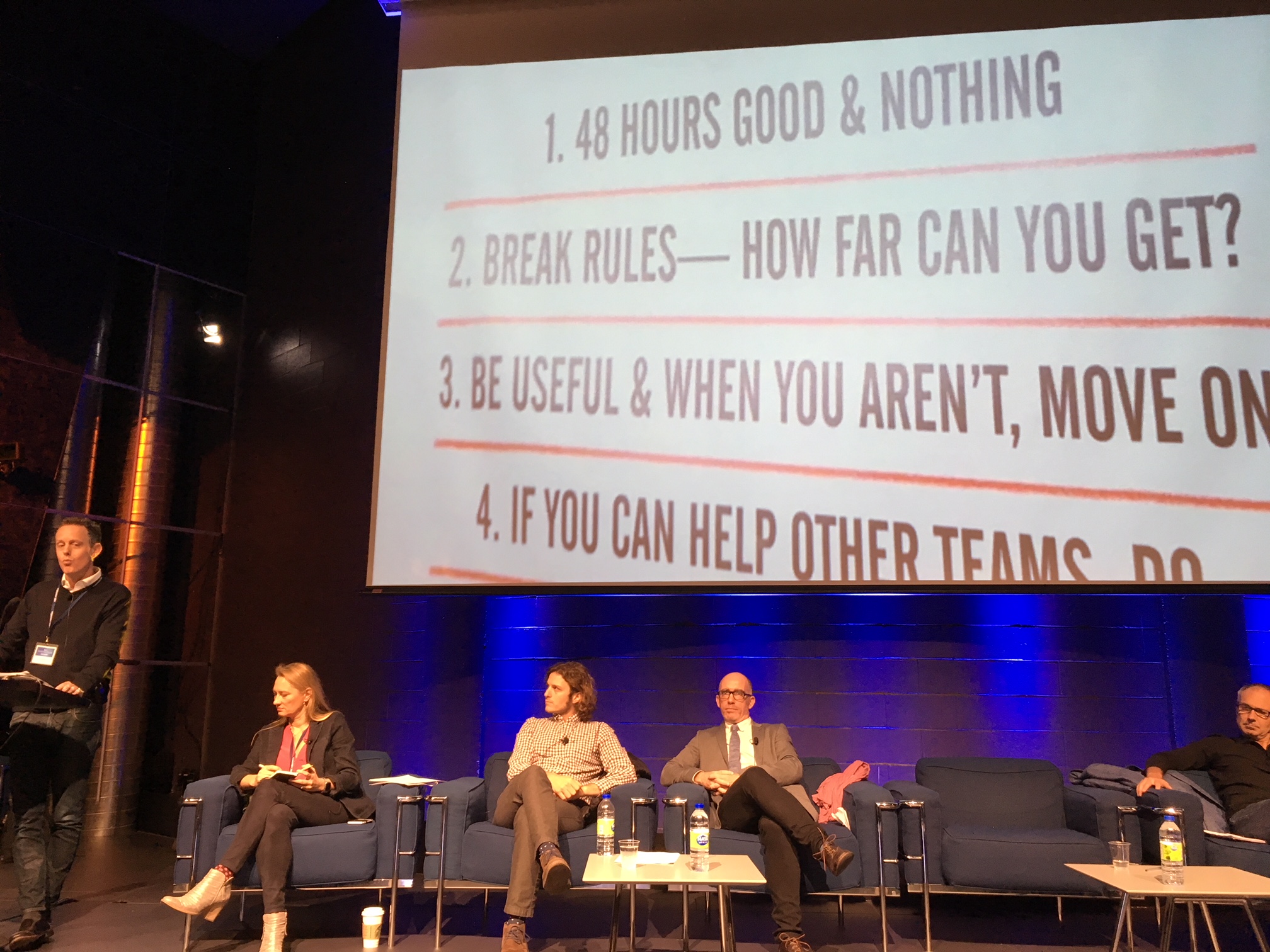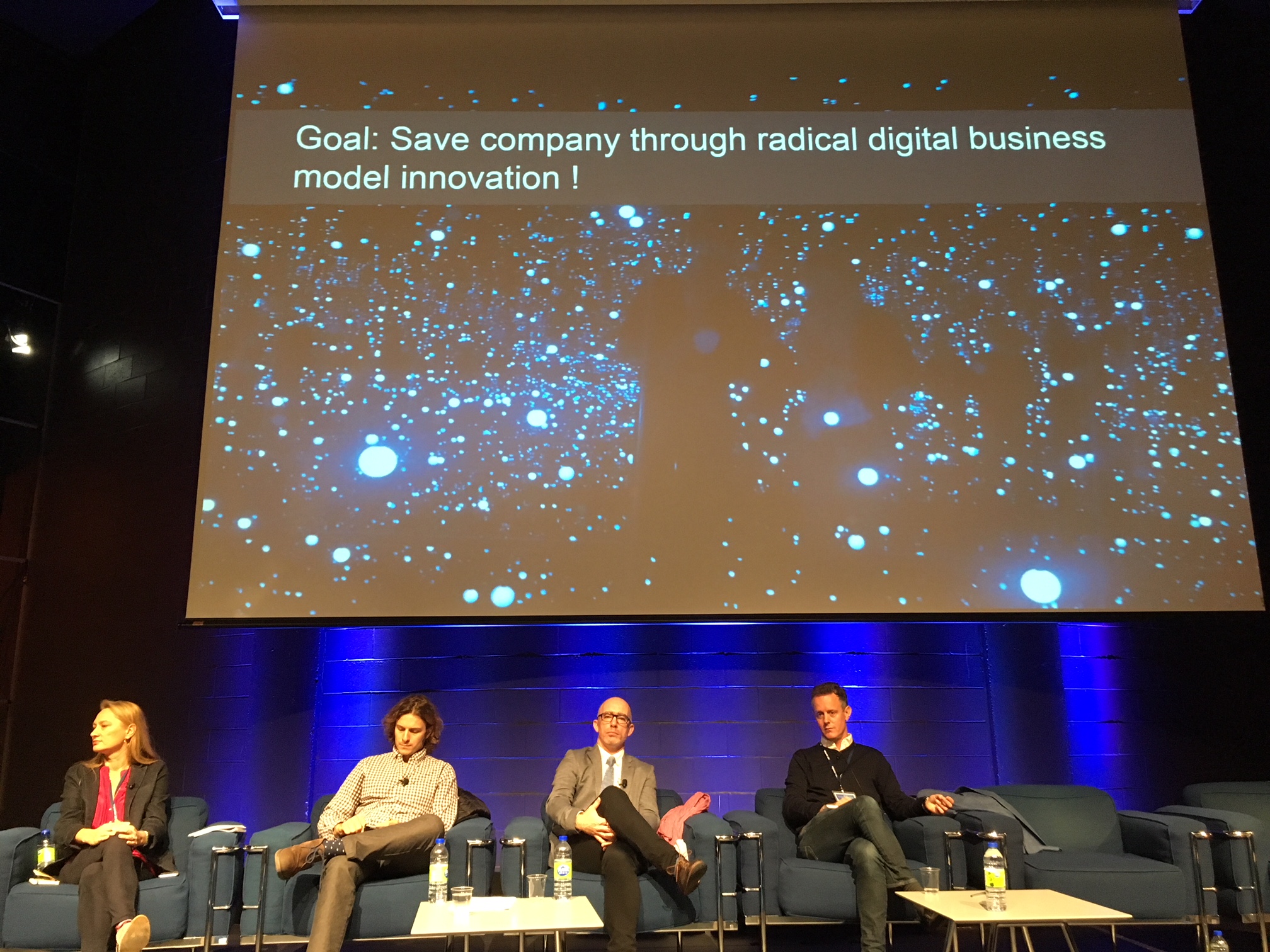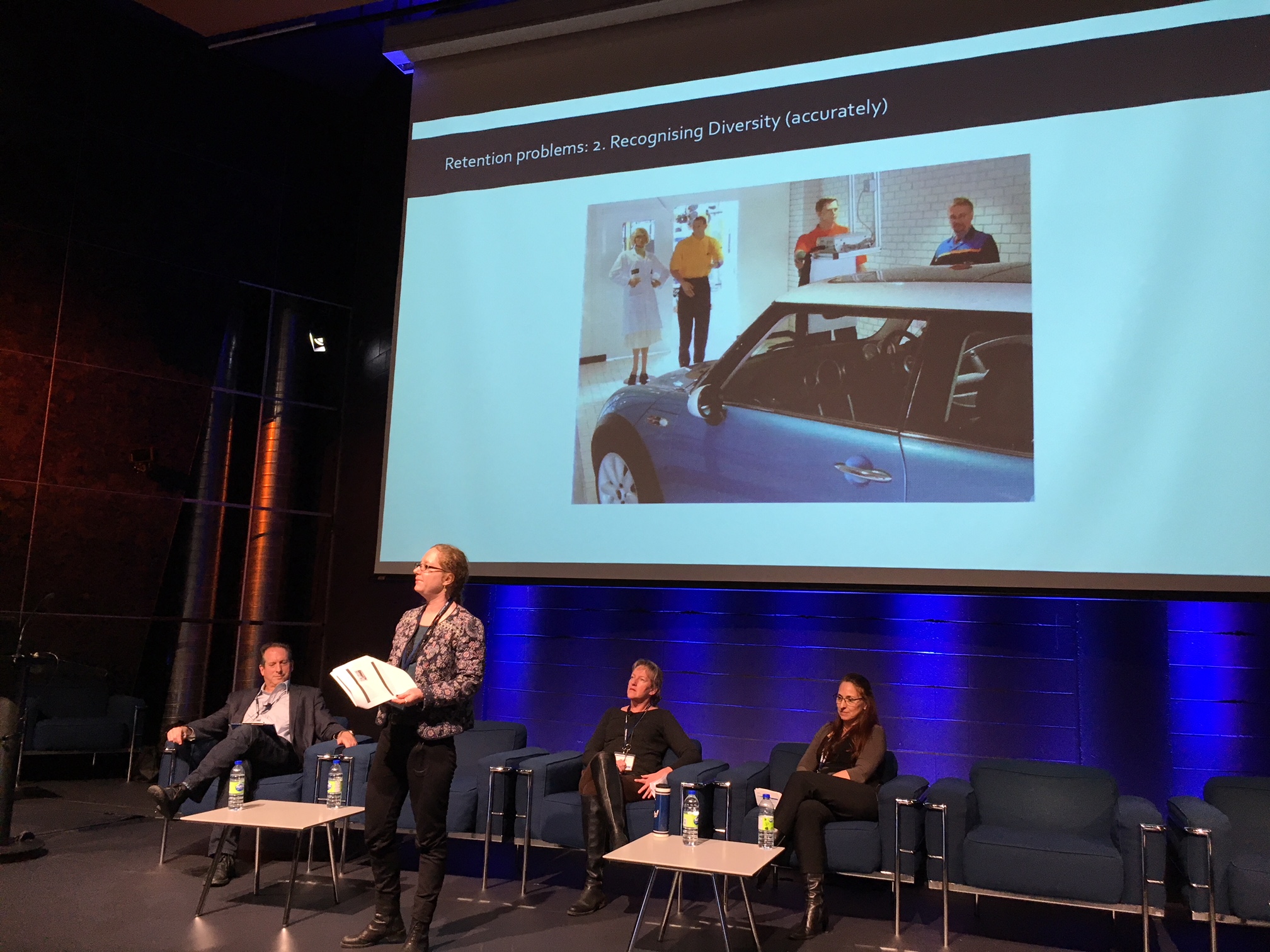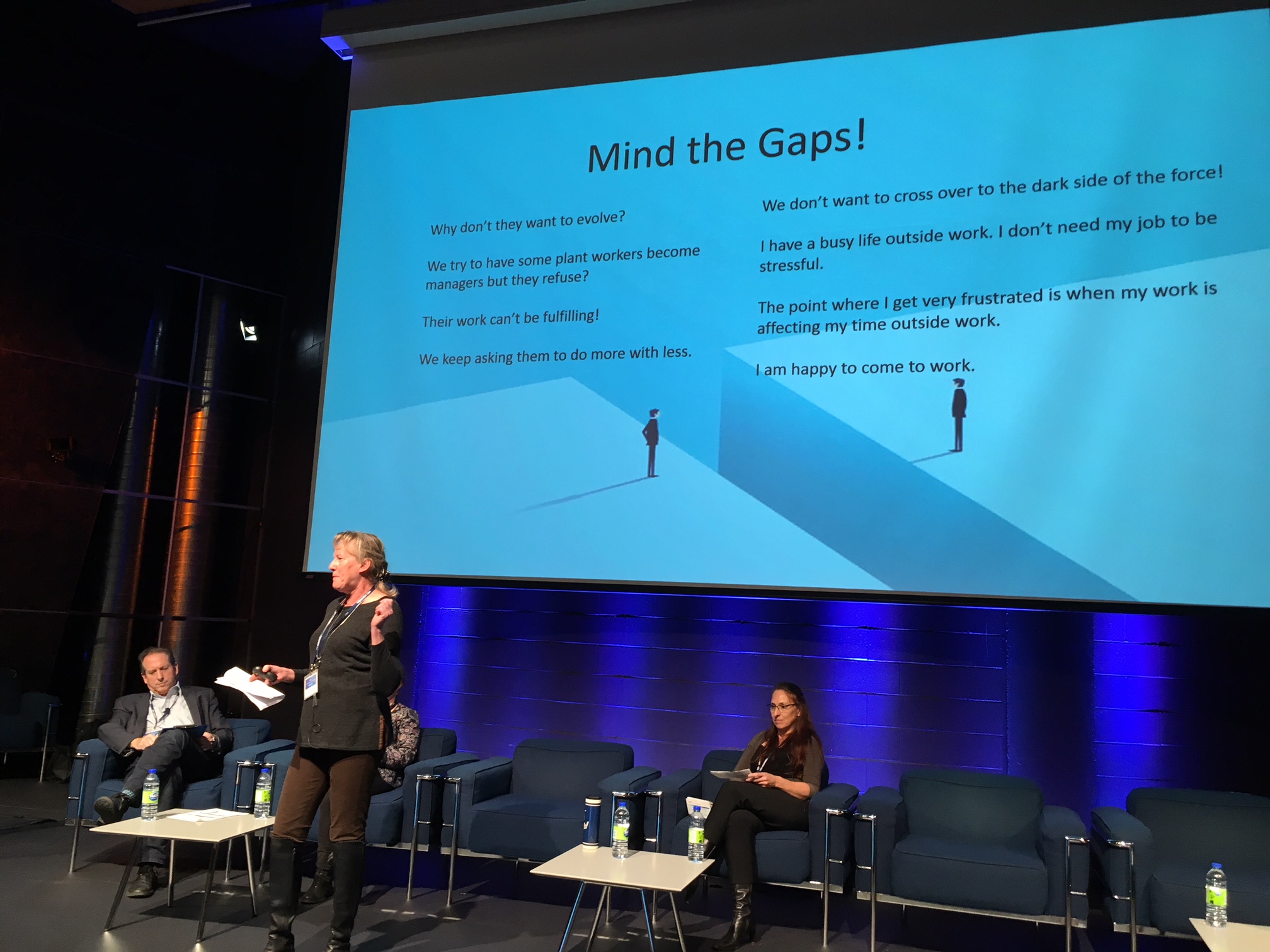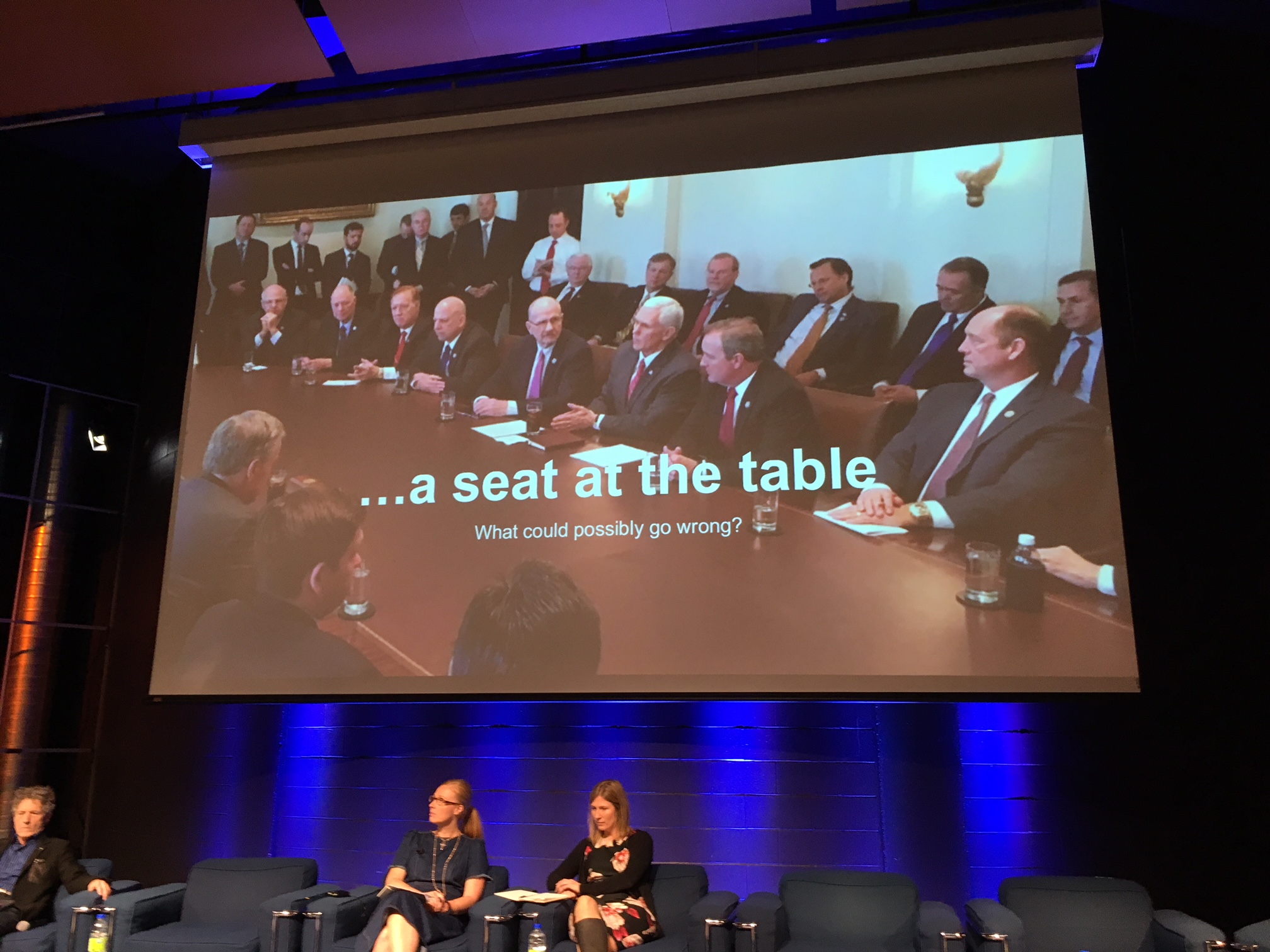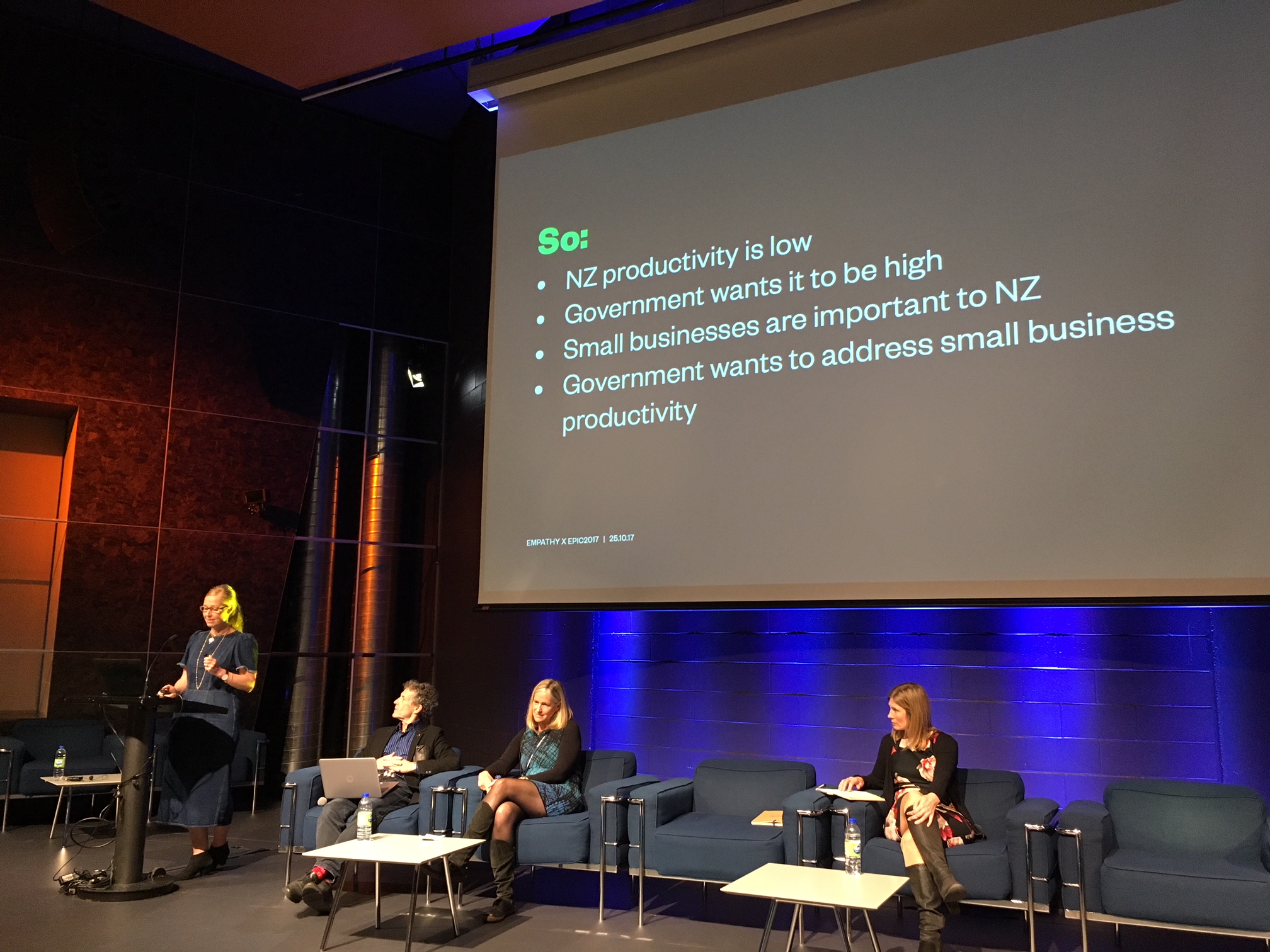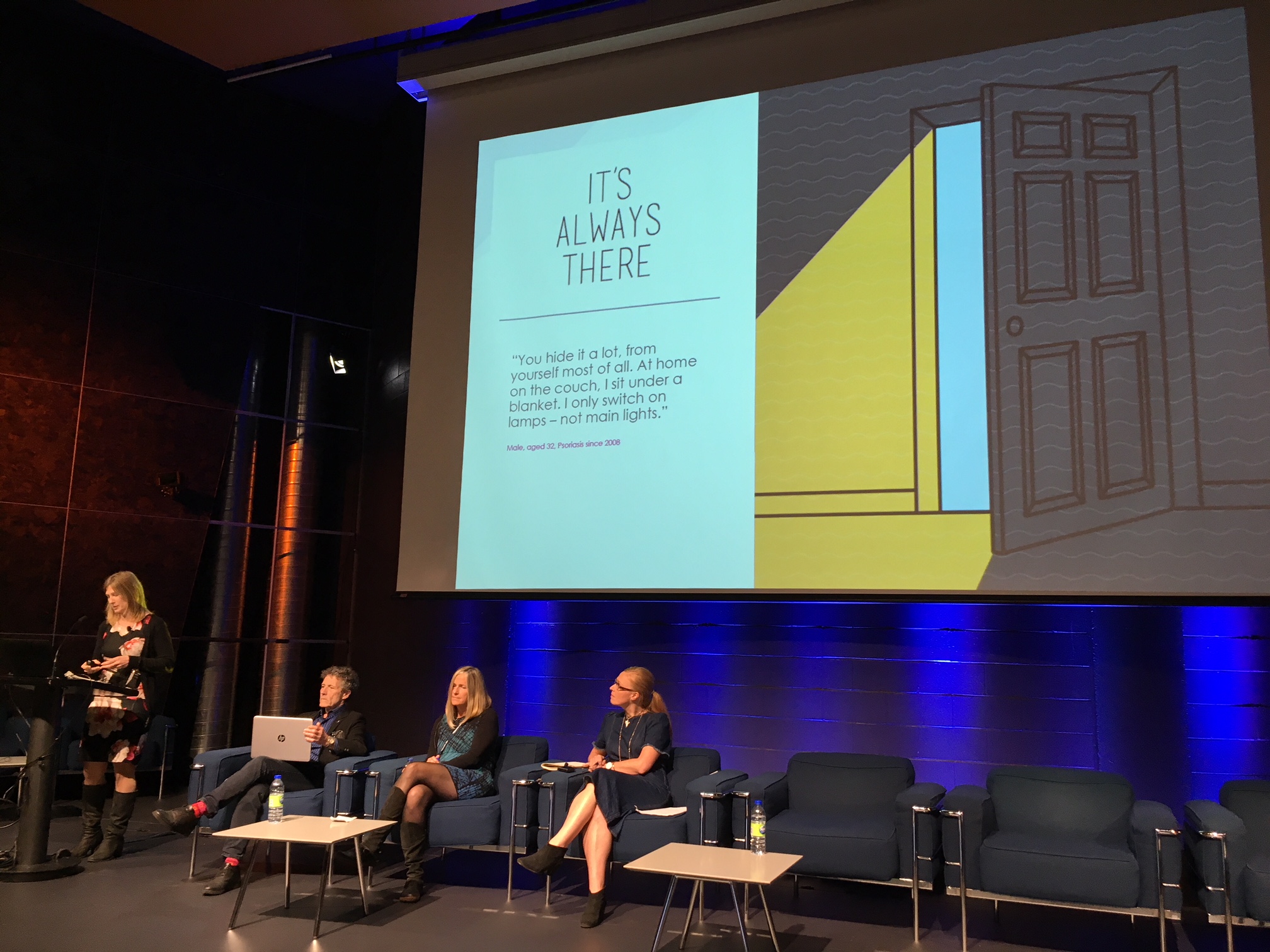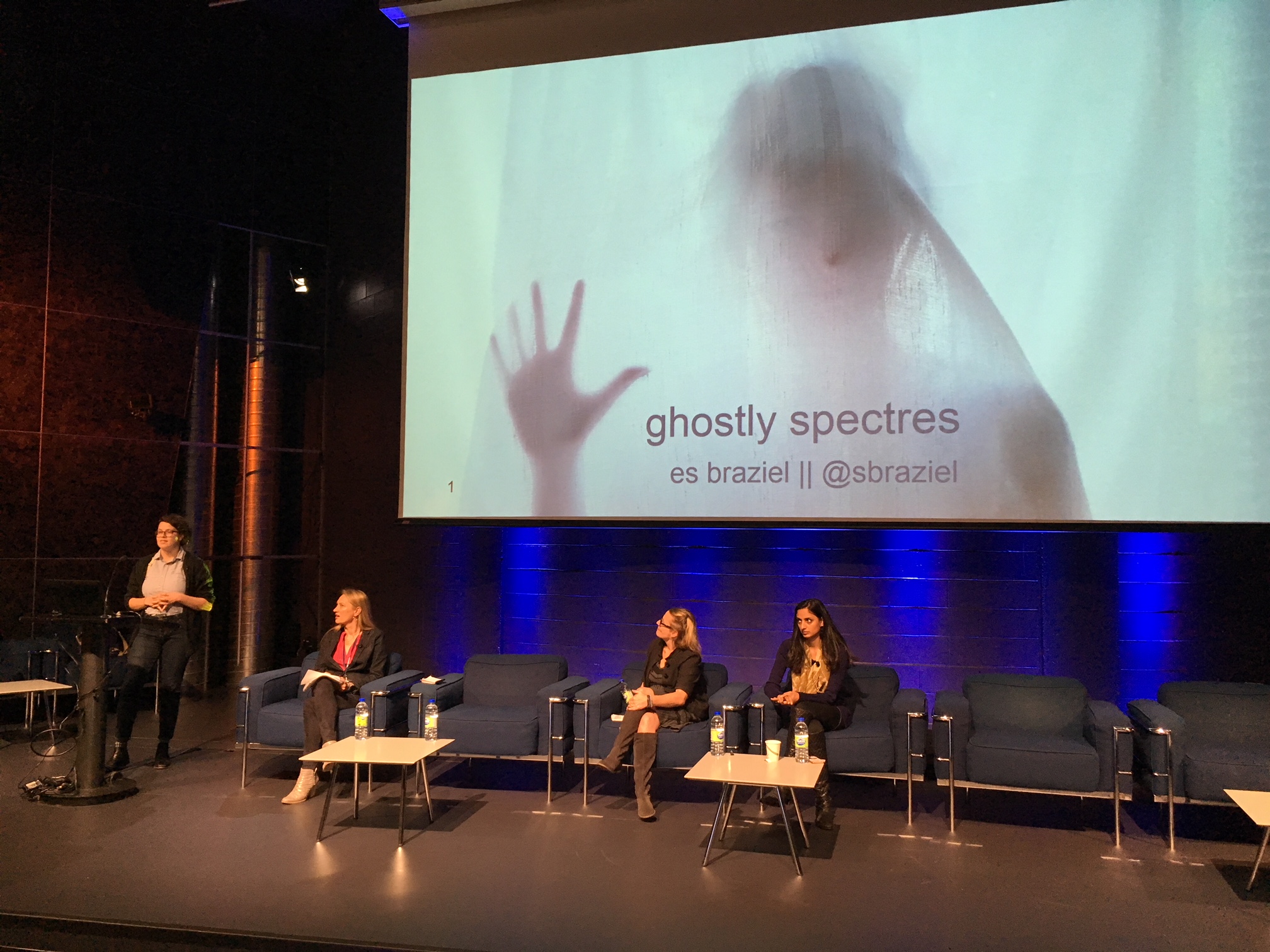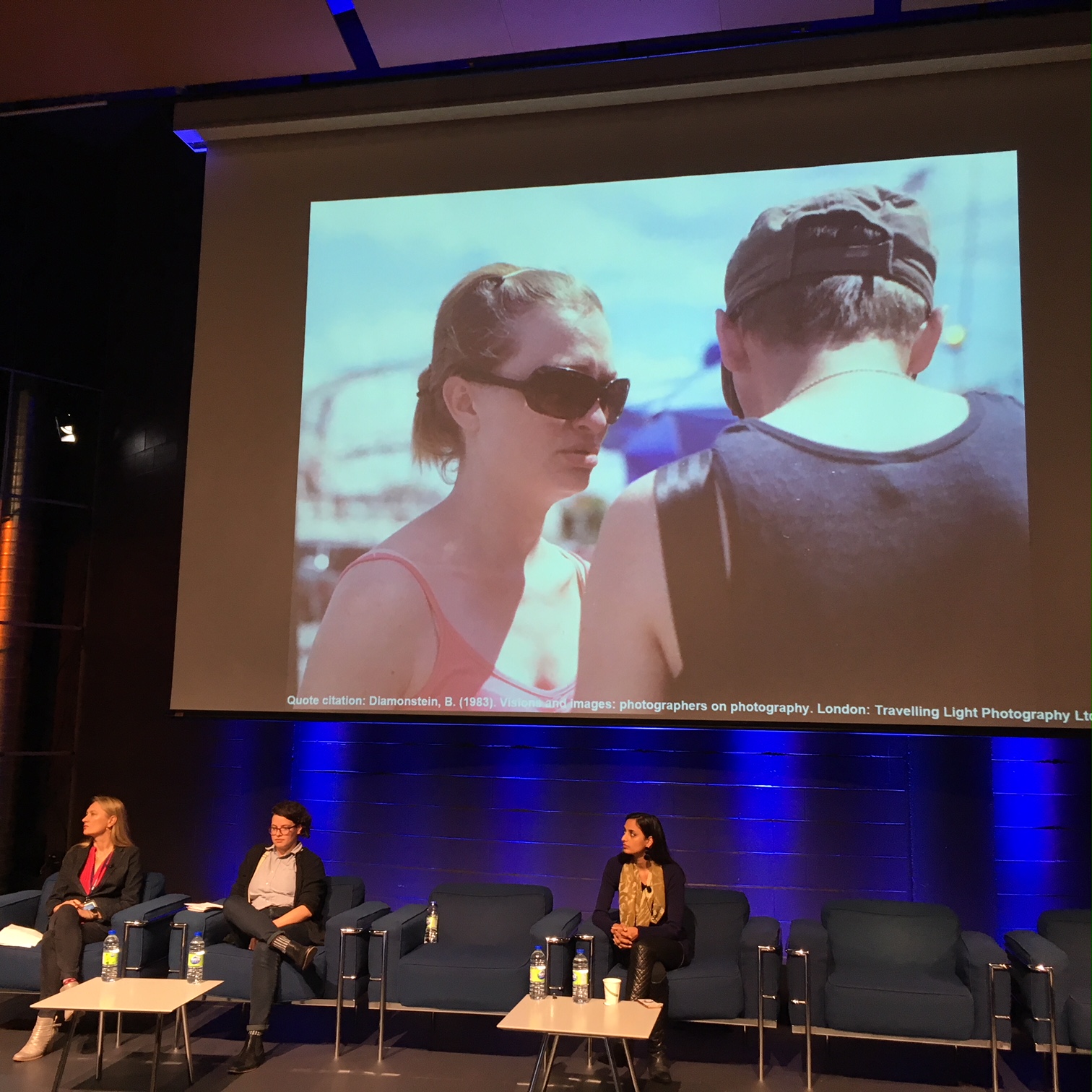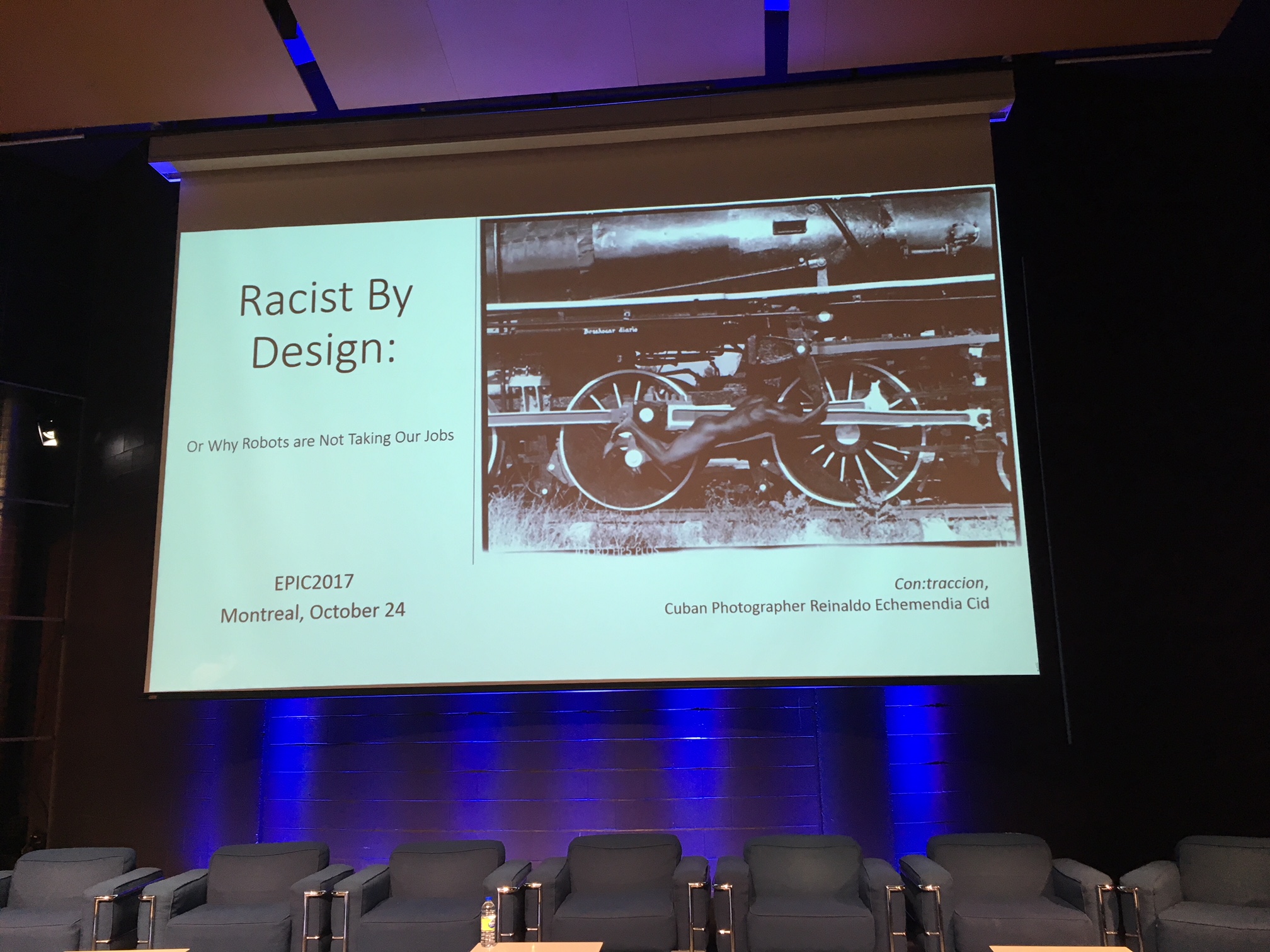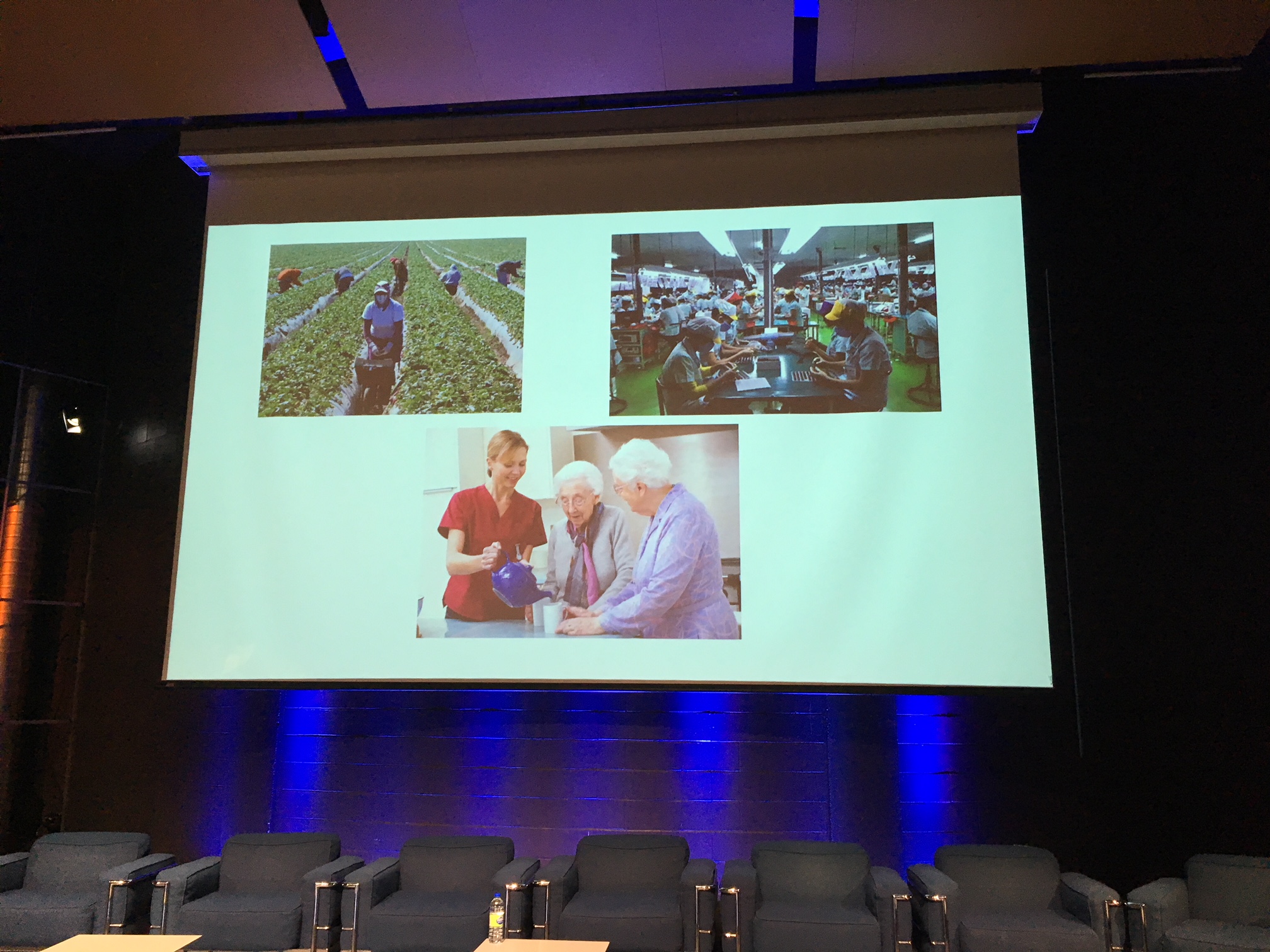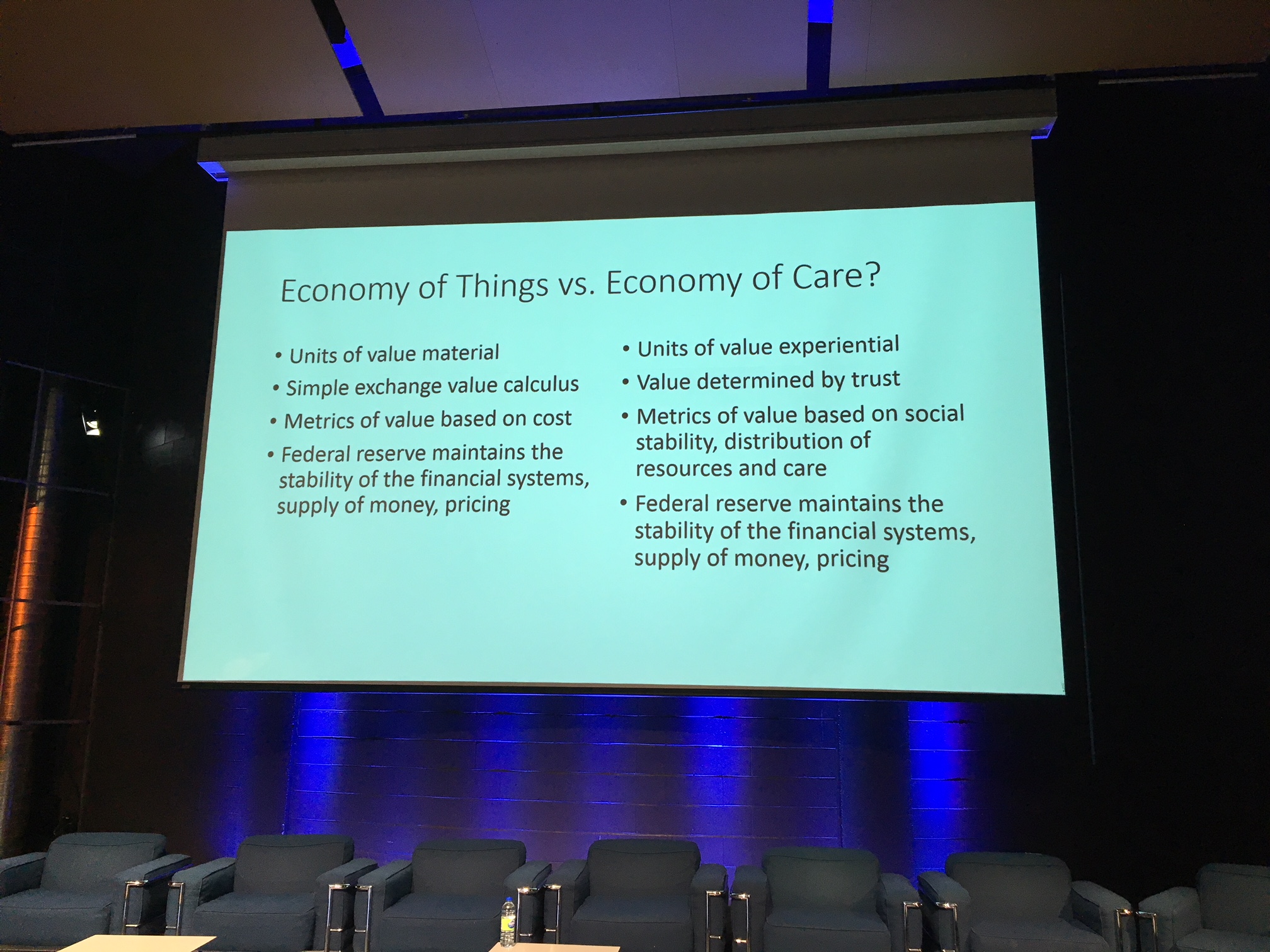Epic 2017 day 3 conference notes
These are my notes for Day 3 of the EPIC2017 conference.
Shifting the Discipline - papers session
Themes: Consider ways of changing and shifting ethnographic practice. differen approdaches to conceptualising ethnographic research. new conceptual tools. disrup simple definitions of ethnography and its relation to adjacent disciplnes, i.e. tools of design to allow new objects to emerge,
Situated: Reconsidering Context in the Creation and Interpretation of Design Fictions
Marta Cuciurean-Zapan • IDEO
why ‘design fiction’: The future and the past offer the next largest context to the present Ethnography immerses us in the field. Design fiction can take the thick description of ethnographers and pivot it to a ‘what if’
Design fiction is characterised by an internally consistent story. i.e. breakfast scene in 2001. highlights isolation of astronauts rather than focusing on the ipad-like object (which ‘blends in’ in the scene)
Design fiction creates scaffolding to interrogate expectations and reactions to the future
4 approaches
-
participant and site selection. finding real world things that can be analogies for the design fiction you want to create. we can’t go to the future so we go to a place that might be more like it one day. Get participants to interact with the design fiction.
-
narrative creation. use ethnography as a source for creating design fiction. For example, Concept Kitchen 2025 - ethnography exposed desire to avoid waste and interest in germ transferrance which informed the design of the concept kitchen
-
co-creating provocations. provide participants with prompts to spark and direct conversation around the creation of a design fiction
-
multiple directions. Design fictions encourage multiple viewpoints, and the openness of the form invites exploration and experimentation. Focus on contradiction and contrast in particular.
design fiction can introduce branching into the design process. rotating realities.
this can be a more useful research tool than is currently used. the fictional world it creates is self-contained but has connections with the present world we are interrogating.
TRACES: Towards Multi-Dimensional Ethnography
Julia Haines • Google
Pushing discipline forward by considering dimensionality of our work. Increasingly important given tech pervasiveness and human augmentation by technology.
In 90s. Movement towards multi-sited ethnography (as opposed to single-site ethnography). This is something similar but with digitisation.
experiential spaces are not always physical spaces they are virtual and ephemeral.
explore the boundaries and seams, flows and assemblages and multiple identity in these spaces.
explore human agency and action while accounting for machine agency and action
this is a progression:
digital as subject (90s)
-> digital as site (ethnography and virtual worlds in 00s)
-> digital as data source (ethnomining and trace ethnography in 2010s)
-> digital dimensionality
Rooted in activity theory: subjects have needs, object orientated, heirarchy of needs,
Tools, methods and approaches used:

use of logs is not new - new bit is extending its use and how to combine it with other tools+data and new analysis to generate new meaning.
future direction: this goes beyond screen world and we need to account for other modalities. these are not places like a website, and are increasingly guided by machine learning
Five Steps Behind: The Role for Ethnography in Bringing People Back to the First Steps of the Value Chain
Martin Millard & Yosha Gargeya • ReD Associates
global consumer goods companies faces a lot of challenges, in particular quality of product. They’re struggling to make meaningful innovation.
Paper is about scientists at speciality chemical companies that develop products that help FMCGs develop products that taste, smell, feel etc the way it does
they deal with Qs like: If you stack 20 loaves of wonderbread on top of each other, how to ensure bottom loaf isn’t squashed?
But if they are to have a bigger impact they need to shift perspective of consumer. They enable much of the product innovation in consumer goods today but are placed far, far away from the end consumer.
Innovation is driven from a technical perspective.
THis causes a view of products that is dirven by what is objectively true.
industrial gas producer - what is best frozen food? A: need to freeze as soon as harvested. but to consumer, it’s buying fresh ingredient cook, and freeze leftovers.
industrial baker - test is: can i fold the bread and unfold it and it keeps same shape? never stopped to consider context in which this is even relevant.
they are extremely smart but don’t think that understanding the customer is part of their job description: their customers (FMCGs) do so much consumer research that there’s no way (and no point) for the supplier to understand the customer
they are reduced to taking instructions from their customers on what to innovate on. Problem: pipeline of problems that don’t match their assets. Tunnel vision. Incremental improvements. Imprisoned opportunites (potential breakthrough innovations are locked early to the customer who provided the idea)
If they could shift perspectives:
Key learnings:
- learn the technology. those details need to be recorded
- Understand all the players in the supply chain
Ethnographic Tools: From Insight to Intervention
Wafa Said Mosleh • Southern Denmark University
Worked with a company that was trying to become more structured in how they do front-end innovation. Introduced a structured form that employees had to fill in before projects became greenlighted.
Her project: figuring out what this shift (from a more informal to a more formal processs for front-end innovation) mean for employees?
The tangible brief went from supporting managerial agenda to being a provocation of new conversation. The tool was negotiated through employee’s use of it.
Tool has 4 levels. One level - talking about who are the stakeholders and when is it important to involve them. have a discussion about it rather than impose from above and assume everyone gets it
2nd level is resources.
3rd level is strategy. physical spider diagram to visualise how their project support different overall goals of the company.
4th level is physically mapping out the process of how it would happe
Thought that this project would
All of a sudden, they have created 50 of these briefs and sent to manager, but nothing happened. So they spoke to manager, which forced the manager to admit that there was no actual resources to execute the projects, but was instead a way of reframing cost-cutting.
In follow-up sessions: found that employees hacked the system. so they physically moved to sit with internal customers to generate curiosity and enrol them as allies to fight for and acquire resources.
These tangible artifacts could potentially challenge structures and challenge existing ways of doing things in companies.
Instead of just communicating my findings, could maybe do something with it in the field, and contribute with more than just insights.
Mixed Method Approach for Identifying Emerging Fields and Building Collaborative Teams: Leveraging Network Ethnography to Design Experimental Interventions
Therese Kennelly Okraku, Valerio Leone Sciabolazza, Raffaele Vacca & Christopher McCarty • University of Florida
Started with question: How do scientists collaboarte? and how does that change over time? How to identify emerging research fields?
Network ethnography- combines network analysis (structure shows what is happening) with ethnography (context shows why it is happening)
Ten steps of research process
-
participant observationa dn initial inverviews with scientists
-
use publication adn grant data to construct the network
-
choose community detection method (Louvain) and set criteria for identifying emerging research communities. use ethnography to inform this decision.
-
Analyse web profiles
-
Interview and share community visualisation with scientists (feedback is that these are stable, small communities)
-
Revise criteria based on user’s suggestiosn and get their feedback
-
interview and share revised community visualisation with scientists. Showing viz of different ways of defining community
-
Share findings with org leaders to get buy in for network intervention. initially very sceptical of us trying to change nature of collaboration
-
identify pairs of scientists for collaboration
-
Invite paris to participate in our network intervention
Found different types of communities: i.e. Core Community, Bridging communities (i.e. epidemiology, emerging pathogens - lots going on, not everyone knows everyone)
Learnt ethnography helps us make chocies about what algorithms to use. Ppl sometimes think algorithms are objective criteria but ethnography can help design better algorithms
users really enjoy interacting with network visualisation - being able to see it makes a difference both with participants, and with stakeholders. especially if you can also share the why with ethnography.
Consumer Finance in a Mobile Age: Methods for Researching Changing User Behaviour
Erin Taylor • Canela Consulting
Overall trend in banking is one of greater choice. phone acts as a proxy - mediates movement so we don’t have to move ourselves. Other trend is unbundling
result of these trends is a type of thinking that says to just focus on a niche and ignore other things (like regulation, business customers, etc)
How do we help companies deal with this very puzzling change? basis of the changes is mobility of different kinds:
-
Technological mobility
-
Information mobility
-
Product mobility
-
Human mobility
What are the implications for research? Have to think about multiple channels, services, providers locations.
Created a toolkit of methods: financial diaries, object-centered interviews, social network analysis, etc.
People tend to keep all the information (their ledger) inside their heads.
“Ignorance drives our creativity, but broad professional knowledge helps us frame good questions.”
There’s a myth of the unbanked - that people who don’t have bank accounts don’t have any financial tools - this is actually not true and some people without bank accounts have much better financial arrangements.
In Netherlands - you basically cannot do anything without a dutch debit card. It’s basically your consumer citizenship card. This is exclusionary to, say, foreigners, but those in netherlands don’t see it as a problem.
Pecha Kucha: Igniting Action
Perspectives challenge our assumptions, provoking reflection and discussion about our values and pushing us to refine our practices. They don’t just inform—they ignite action.
Time for a Digital Detox: Burnout, Addiction, and Desperation in Silicon Valley
Shaheen Amirebrahimi • University of California, Davis
What was that? Our vision of the future But who comes to these? Those of us burned out from a world of being always on, of false connections
“I have found utopia, or perhaps, more likely, a cult.”
I’m not sure where the boundaries of this event lie any more. it seems to have grown beyond anti-tech.
Can you take the technology out? Not so sure that you can. technology is extension of self. Q is what kind of self do we become.
The Big “I Don’t Wanna”
Enrico Cullen • Related Parts
Intitutional defiance of evidence. Wanted to underscore the power of belief.
We had a lot of evidence and data but they were insufficient in convincing.
Question of purpose: The way that the data works is that it underscores illness. It frames a negative discussion. Ethnographic research could provide backing for reframing the conversation to a positive one about wellness.
There’s a lot of evidence that says we know how to handle asthma, but almost none of it says it requires rushing kids to hospital. There are very simple solutions to asthma - hypoallergenic bed covers, etc. but institutions often cut that line item when considering budgets.
Belief and knowledge come together in ambiguity.
I’m talking about ways of know and ways of telling stories that can improve people’s lives. Luckily, all grammars leak. There’s space to tell better stories
Resistance can be fertile, even if it can take decades
Sometimes we know what we believe more than we believe what we know.
Satire can be effective but it doesn’t make us soar. It doesn’t lift us.
Using Your Feet: Subverting the Structure of Meetings to Help Teams Go Further Faster
Tom Rowley • Stripe Partners
Subverting meetings. There is an increasing trend that people don’t pay attention. It’s not a meeting.
Tried planking meeting in office - thought it would be more efficient. It wasn’t.
Best business meeting was in california around a fire.
Owen Harrison - open space technology in the 1980s. Different theory of how to run meeting. Only law of open space theory is the law of two feet: if you come to a meeting, come with both your feet.
First principle of open space is about focus.
Second principle is about time.
Beyond that, no agenda. people self organise.
There’s a risk that busy meeting syndrome is creeping into commercial ethnography. interviews where we are imposing our structure onto participant’s life (with interview guide).
Have to do that but can we introduce some subversion into process? Bring bodies back into it. It’s about doing things adn taking time.
It’s not just time in the ethnography but time afterwards - time with clients.
Bring both feet back to ethnography.
You have to help people bring both feet back, and it can take time. A lot of it is about time and place.
The Challenged Role of Ethnography in Startup Centric Innovation
Heinrich Schwarz • Schwarz Innovation
Shift in the way innovation being done towards a startup-centric innovation.
two challenges: how to keep a user perspective, and how to look at things differently
Case: innovation lab of a German energy provider - needed radical business model innovation
At first, user driven innnovation strategy. this was a big challenge for a company with an engineering mindset
too slow, limited results.
New strategy: partner with existing startups to build new buisness. Why invent everything ourselves? in-house is slow and difficult
New startup centric process: from opportunity spaces to startups to new ventures
But verdict is still out - lots of ideas, speedier process, BUT hard to find the right startup with the right fit.
Need to feed a large funnel to come out with a small handful of partnerships
But also a challenge: user perspective can become lost in the process.
trial adn error mindset prefers building and testing over understanding. Assumption that startups know their customers but often they don’t have the time and resource or knowhow to do proper user research.
interestingly, corporate and startup mindsets are aligned in not underststanding customer mindset.
BUT - story so far is too simple. actually, many opportunities even in new process for interventions. but often ad-hoc. How to unite all of it into one simultaneous process?
Third part in the strategy is moving towards investment.
Perspectives on Organizational Culture - case studies
“Delivering the Secret Sauce”: Culture and Identity in a Corporate Merger
Barry Dornfeld • CFAR Consulting
We know culture is important. It’s a bit of a black box for the client.
Maintaining cultural autonomy throug the merger
Goal was to preserve ‘west coast culture’ while achieving enough operational integration to both make the merger a business success and to scale the boutique globally.
But real challenges became:
-
Most of the pressure fell onto the two companies’ HR departments
-
Insufficient and unclear communication led to ‘integration fatigue’
-
Boutique felt like it was ‘losing its soul’
They decided they needed help and sought out a ‘culture agency’. HR dept found and hired CFAR - seen as a boutique consulting firm who could understand the smaller partner’s way of thinking.
Methods: ethnographic observation, open ended interviews, “know, feel, do” survey, sharing of data with leadership
Cultural findings:
-
different histories and structures
-
Planning vs spontaneity
-
Unequal stakes in the future
-
Privileging one company’s culture.
There was a bit of a culture envy that became a barrier.
Getting attention of leadership group was a challenge. there was integration fatigue and leadership group wanted to move on.
Mix of quantitative and qualitative data helped them realise they had more of a culture problem than they had thought, and that culture was getting in the way of business performance. While qual data was used, survey data got their attention.
And then, integration stopped. Work put on hold for a while.
The work is now being restaged with focus on interventions with the workstream teams.
Insights:
-
Critical to understand what in the client’s world, counts as culture and how to make it concrete to work on
-
How to get traction for working on culture, it is critical to tie cultural issues ot business performance
-
We need to pay attention to what counts as data for the client’s culture.
They had a delimited notion of how people work on. confined to behavioural space. we loked it more broadly - decision rights, etc.
No One Reason for It: Workforce Diversity, Cultural Complexity, and Staff Retention at BMW MINI
Fiona Moore • Royal Holloway University of London
Project: ethnographic research project on BMW Plant in Oxford. Two focuses of the project: Recruiting women and Retaining staff generally
Fits into ethnography in factory settings and studies of diversity and its impact on factory workers
Project was instigated by management: two problems, but not showing through exit interviews and survey data.
Participant observation ‘on the track’. formal interviews, informal interviews, archival research, etc.
Plant was well over 100 years old. started as a bicycle factory. was twice an aircraft factory.
Plant in 2003 - still smarting a bit from Rover-BMW merger. element of stress because popularity of mini meant backlog. dispute with union over speed of the line.
Workforce demographics - 10% females, bunch of ethnic categories imposed by management.
But more important are the three groups:
-
Long term joiners
-
Short-term joiners
-
Undecided
Lots of overlap between the categories
Retention problems:
BMW’s relationship with associates. From the beginning were given/sent message that ‘they really don’t care about you’.
Recognising diversity accurately. i.e diorama displayed in the plant.
workers all males. customer/visitor female. all white.
Training or lack thereof. eliminated formal training because thought that people could learn by osmosis which was not the case at all.
Management’s obsession that main retention tool was through scarcity of contracts that they award. but changing demographic of plant meant contracts weren’t valued as much
management were focused career and prestige of being part of this brand but workers just wanted good wages and good mates. Resulted in management became convinced workers were mercenery and workers convinced management were silly fools.
Outcomes: Immediate - resumption of training, changes in night shifts, etc. Longer term - working with managment
Bringing Attention to Problem Solving and Meaningfulness at Work: How Ethnography Can Help Answer Difficult Business Questions
Carole Charland & Karen Hofman • Sapiens Strategies Inc.
Project: defining the unique culture of the business unit.
It’s never the methodology that’s the hero of the success of a project like this, it’s the people. They were very couragous and gave us a lot of trust in the project
What does it mean when we are asked to help change or orient an organisation’s ‘culture’?
“Culture doesn’t interact”
Very important to talk before starting the project because conceptions can be vague/different due to amorphousness of the term ‘culture’
culture problems are wicked problems: The client is facing something important but you don’t know what you don’t know during the project design phase, nor at the outset of research.
So what to do - it’s important to build mutual trust and this must be built both at the initiation of the project and throughout it.
Approaches and caveates:
-
best-informed consent
-
clear and transparent definition of the reearchers’ role
-
insist on a validation session after the results are known
-
willingness to iteratively adjust orientation
-
frequent touch points and checking in.
-
extended field time
Mind the gaps!
You encoutner a spaghetti of issues so have to focus/start with specific issues and tensions.
In this project, started with the tension of: dehumanisation of work. A sub-theme of this was forced overtime. another theme was difference in perception of the work and the role of work in their lives.
Employees were asked to be progressively more responsible and autonomous but in a setting where the number of managers were increasing. They were asked to develop competencies that were at odds with a command and control management style.
Told managmenet employees were feeling udnerpapredicated. managment were aware of this and was about to introduce an oscar-style performance award.
But this was not what employees wanted at all. They wanted something much more basic - existential recognition
The management team challenged us to translate the findings into something that fit into how they worked and made decisions.
In the end, allowed management to present the findings to the employees. Led to outpouring of sharing from employees.
Empathy was helping them be more efficient. We had led a process of developing empathy. It’s more than a sentiment but the culmination of a learning process.
Narrative & Perspective Shifts - case studies
It’s not Just Childs’ Play: Changing Corporate Narratives through Ethnography
Anne McClard • Intel Corporation & Therese Dugan • Facebook
We were trying to drive cultural change within our organisation and also in the broader industry (the toy industry)
Play is really the business of culture. You cannot understand play without doing ethnography.
We were only two women at a table of men brainstorming the future of smart toys. Had to keep reminding them that girls exist in the world. “Well my daughter does such and such…”
“For many years the conviction has grown upon me that civilization arises and unfolds in and as play” - Johan Huizinga
They mostly wanted to know how big the market is, what colour to make their toys, etc. Had to remind them to think more broadly and also beyond the US borders.
Play is producing culture and culture is producing play
We reap what we sow. Things taht matter when it comes to children’s play and devleoping life-long interests. If you don’t have women in the room when products are in the room, then we get what we get. If we don’t have toys that provide kids with equal opportunity for learning different types of knowledge, then we get what we get.
Ethnographic findings:
-
Settlement patterns have important implications - v different between US (less densely settled) <-> Germany <-> China (densely settled)
-
Education systems are radicaly different between countries. Germany (less regimented) <-> US <-> China (more regimented)
Much higher value placed in China on educational play. Want everything to be geared to learning. In Germany, greater valued placed on imaginative, free play.
- Women are primary caretakers in all three places but their lives are different in each country. Germany (Work outside home less) <-> US <-> China (work outside the home more)
All 3 of these therefore have implications for product development.
LEGOs they made for girls don’t teach the same things as the LEGOs that they make for boys.
Q: Why so hard to get funding? A: There is a perceived value problem and also an issue of how different organisations and product groups/efforts are funded. Market research groups are v well funded but harder to get research funded if you work in a product group.
Changing the Perspective of Government
Emma Saunders, MaiLynn Stormon-Trinh & Stephani Buckland • Empathy
Productivity is a big focus of New Zealand government. New Zealand has been lagging behind.
Small businesses make up bulk of NZ economy.
Our team within government are not policy makers. we provide advice and information
First perspective shift is field focus: govt has focussed on macro forces to date. Assumed that if they took care of the macro forces (like diffusion of technology), then business would take care of the rest.
Our brief: How might we get small businesses to use identified macro-force combat moves? We had issue with that. Thought it was feature-focussed not people-focussed.
Reframe: How might we support small businesses to lift their productivity? What’s productivity from their point of view?
Decision points:
-
Deep or wide
-
Owners and/or workers
-
Ignore or observe macro forces
-
Mindset
Second perspective shift: Desire. Small businesses and government think very differently about what productivity is. For government, productivity is good. everyone wants it. it’s about a rate of efficiency.
But for small businesses, productivity is about amount. Most of them were actually anti-productivity. they felt like slave owners if they drove productivity. Some of the macro forces that govt thought was evil for productivity, small biz thought were good - they liked that there’s not a lot of competition in New Zealand. “I don’t want to push my employees to be more productive”
Third shift: Levers - What kind of interventions could government do.
New prompt: How might we change the way small businesses see productivity?
Also opportunities. Small biz often go to govt for help. This provides an opening for intervention. (we’ll help you with this issues but maybe next time you want to think about how to do this differently (more productively))
All this came from rich, deep, understanding of people.
The Inhuman Condition: How Research Unlocked New Perspectives on Psoriasis and Began to Change How It’s Understood and Treated
Sarah Kelleher • Truth Consulting
For Psoriasis patients, clear skin wasn’t enough. They feel like it’s always there
Project brief: information isn’t enough. Could the brand see not just the patient but the people around them as well?
First step - foundational cultural and social discourse analysis. Can start to see shifts in the cultural/social narrative. Self-acceptance and learning ot love what you have is taking hold in the community.
“I keep this to remind me of how I felt. The broken keyboard is my feeling of ‘I am broken’ and the postcard is my blood as I was losing so much blood.”
“I was physically reborn”
But this holistic view is often missing in healthcare providers, so there is a misalignment.
Prototypes allowed us to use the process of design to come up with fresh approaches.
Turned stories into magazines and animations and workshops. We built a network and fed it with stories and inspiration.
We had a core team that was passionate about it (which allowed the project to overcome roadblocks).
Ways of Seeing - Pecha Kucha
Observation is central to ethnographic practice. But what shapes our vision, how we see and are seen by the world? In this session we will look at a range of these ways of seeing—including through art, identity, and changing technology—and how they have shaped our speakers’ approaches to ethnography.
Ghostly Spectres: On Ethnography and Identity
Es Braziel • Greenberg Strategy
Metaphor of the ghost. Avery Gordon.
A ghost is not simply missing or dead persion but is a social vision. Ghost can indicate social dynamics just beneath the surface.
Who do we recruit as research participants, and who’s not in the room.
As ethnographers, we use metaphors to describe what we do. I want to propose a new one: We’re ghostbusters
Lessons from a project talking to parents who want to make the right media choices for their children, particularly around gender:
Wanted to include discussion on transgender and non-binary gender but was opposed by client and team. Yet, from respondents, topic often came up, in ways that was clear that the parents didn’t understand fully how gender worked.
Learnt a lesson in empathy. In a lot of research I was sitting there nodding along and pretending I understood what they meant. But I’m a trans person. I’m the ghost of my own research. Had to sit through parents describing how they don’t understand why trans people should use same bathroom as their daughter, etc
I’m haunted by what it means to live as a ghost.
Emotional Landscapes: Observing and Capturing the Emotionality of Experience
Bridget Monahan • Vellichor Design
Ethnographers are visual thinkers but how could I think more visually? Gradually, through the work of observing, I realised I could see.
Rudolph Arnheim: Visual thinking.
Became photographer. photographed lots of couples. Looked for emotional landscape of the situation: “Spotting states of being fascinated me.”
How does the objective observer remain impartial?
We never look at just one thing, we are always looking at the relation between things and ourselves. Am I seeing my own representative across all of these pictures?
Can extend seeing these emotional visual patterns to images with no humans. Emotions have a character that you can see outside of people. This is anger and withdrawal:
Behaviours are expressions of feelings. There’s truth and emotions that words obscure, and it would do us well to know what they look like
Indian Classical Dance: The Foundational Element in my Practice of Ethnography
Vyjayanthi Vadrevu • Rasa.nyc
Ethnography always felt familiar because of indian dance. became ethnographer of sorts when i stepped into first dance class.
The privilege of a lifetime is being who you are - Joseph Campbell.
We are asked to empathise with an imaginary life i.e. the angry demon
In learning dancing, learnt to take meticulous notes.
Wove together the observed, the imagined, and the personal. Did not question story of Krishna stealing butter to give to animals until guru told story in dance.
In dance, Krishna is not a light blue god as commonly depicted, but black.
Dance could not be as it always had been, because each guru brought themselves to the dance.
I feel that indian classical dance should transcend the mathematical rigidity that it can fall prey to. Same for ethnography.
Not enough to place hands in the perfect position and feel the right emotions. Your duty is also evoke those emotions in the audience.
Racist by Design: Why We Need a New Economic System for the 21st Century
Carolyn Rouse, chair of the Department of Anthropology and the Director of the Program in African Studies at Princeton University
(Or, why robots are not taking our jobs)
Career built around studying racism and inequality. Fascinated by how well meaning people produce systems of inequality.
Research on declining life expectancy among white americans in rural california.
Two concepts used throughout this talk: design thinking and reverse engineering
Sweetness and Power. Industrial revolution didn’t start in Britian but on sugar plantations in Carribbean. Consumption of sugar in europe < 1lb a year to 5lb a year. to increase production, treated black bodies as machines.
We were not at the time concerned with machine bodies taking our jobs. Why not?
Can we apply design thinking / reverse thinking to solve today’s wicked labour problem?
New Yorker article on Why robots, not trade, are behind so many factory job losses.
Robots don’t sick, don’t get hurt, they don’t complain about the weather, so they are an improvement on slaves. (though see how detroit auto workers talk about their relations with robots+automation)
Idea that money and financial systems operate independently and separately from human systems…these are grounded in american’s common sense understanding of money.
But those are not true, so, what do you do when:
-
human’s don’t act rationally
-
economics is a social construct
-
austerity has never worked in rescuing a flagging economy
Unfettererd capitalism - there’s a bug in the system. It requires a pool of labour that is dehumanised.
There are two types of capitalism - Capitalism that’s the simple exchnage of goods, and capitalism where some people can own labour.
Capitalism incentivises people to be productive and innovative. but in order for some groups to be rich, some groups have to be poor. It’s group because the idea of individual success is largely a fiction. people protect their own: unions excluded blacks. redlining etc.
Why are we only now concerned about displacement of humans by machines? Maybe it’s because for working class white male, we don’t have the language and culture to treat them as disposible labour force.
Design thinking for wicked
culture + material conditions + new technologies + new needs = predictable economic + social changes
Marx is a design thinker who got one big thing wrong. Saw that end of industrial capitalism was replacement of humans by machines, but that’s a good thing - freed humans to pursue leisure etc.
We have wrongly convinced ourselves that utilitarian economic theory is timeless and mirrors nature. We’ve forgotten it has a before, and has to have an after.
All three of these exploit their workers. For first two, we might be happy to see robots take over. but for third, we’d want reframing and revaluing of care work:
Why do we put up with labour exploitation? Desire, Power, Delusion.
We’re so wedded to the economy of things that we don’t stop to think what we are doing. Most people have more stuff than they know what to do it.
What’s missing from our analysis is culture of technology creates affect that is linked to identity.
We’re attached to our consumption like a child attached to its favourite toy.
Economy of things vs economy of care
Have to create new units of value. This doesn’t have to affect how we handle money or the systems of money.
Where do ethnographers fit in? This is where anthropology as a theory-based discipline and an ethnography as a practice-based discipline diverge.
Have issue with design thinking which has to do with how it defines its scope.
Am a job hoarder: Professor. Choose to cook and garden. Housekeeper. She’s her own accountant and secretary and travel agent.
Into a radical redistribution of work. Can we design technologies that don’t just take away jobs but create jobs that require trust and expertise and care.
The ghost in all this are the poor people.
We all need to be able to recognise one another, and work (and the affect of work) is one way in which we recognise each other.
